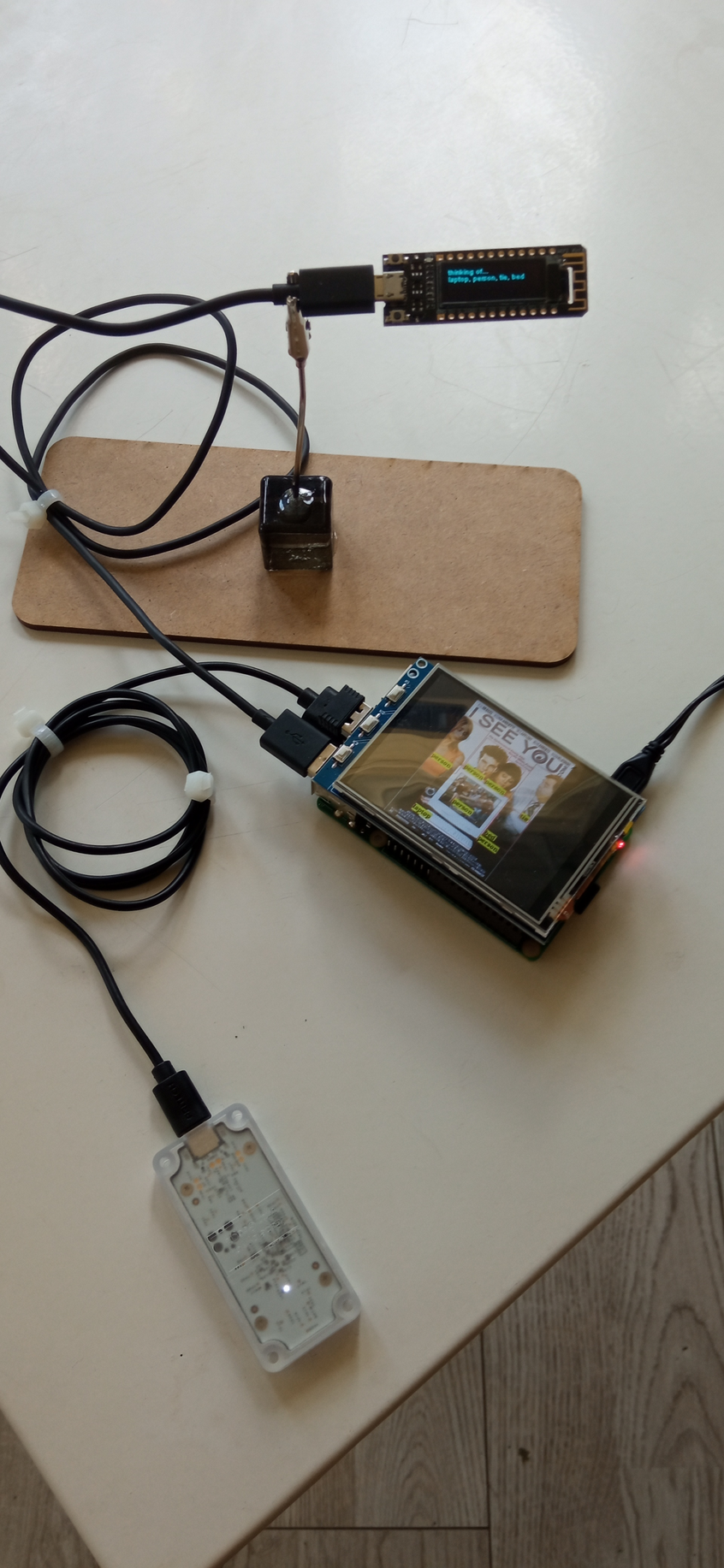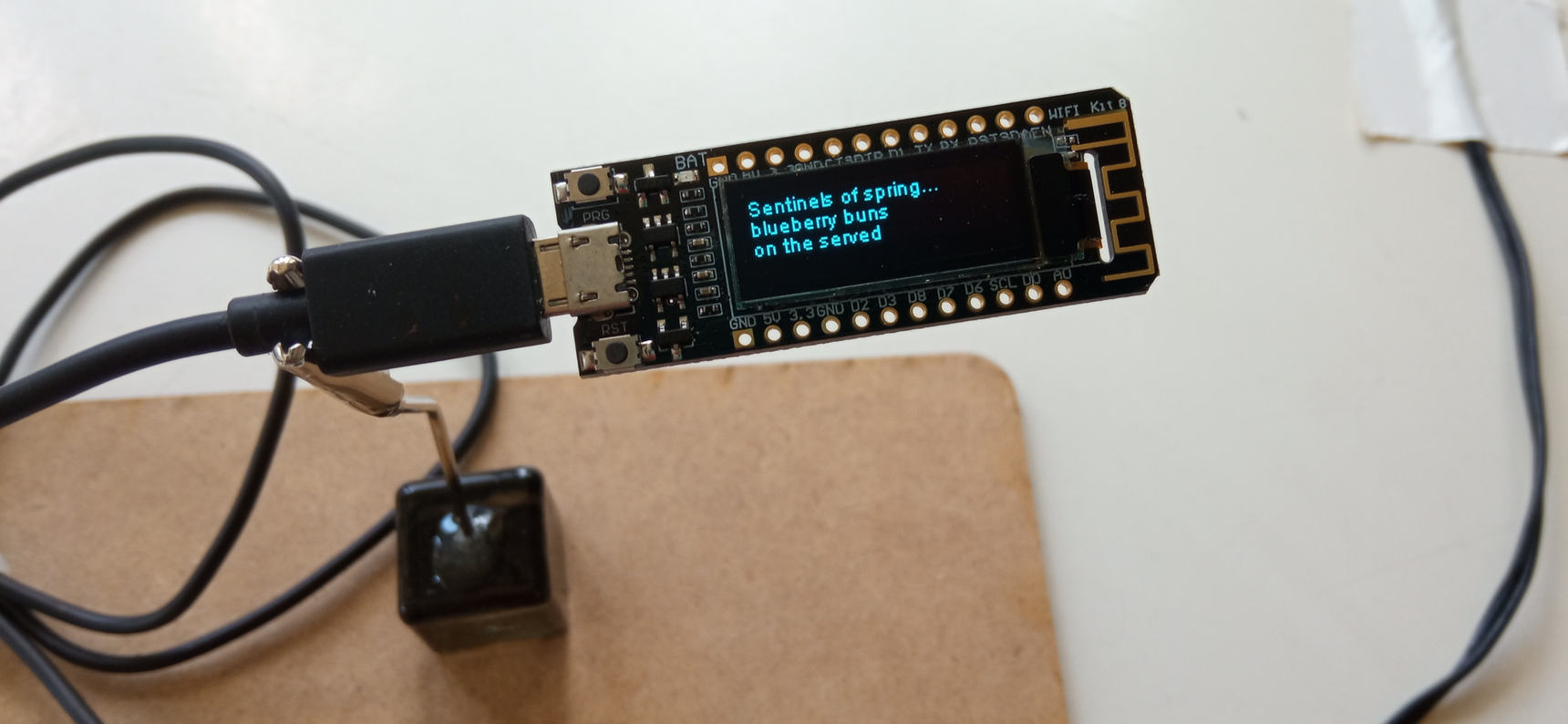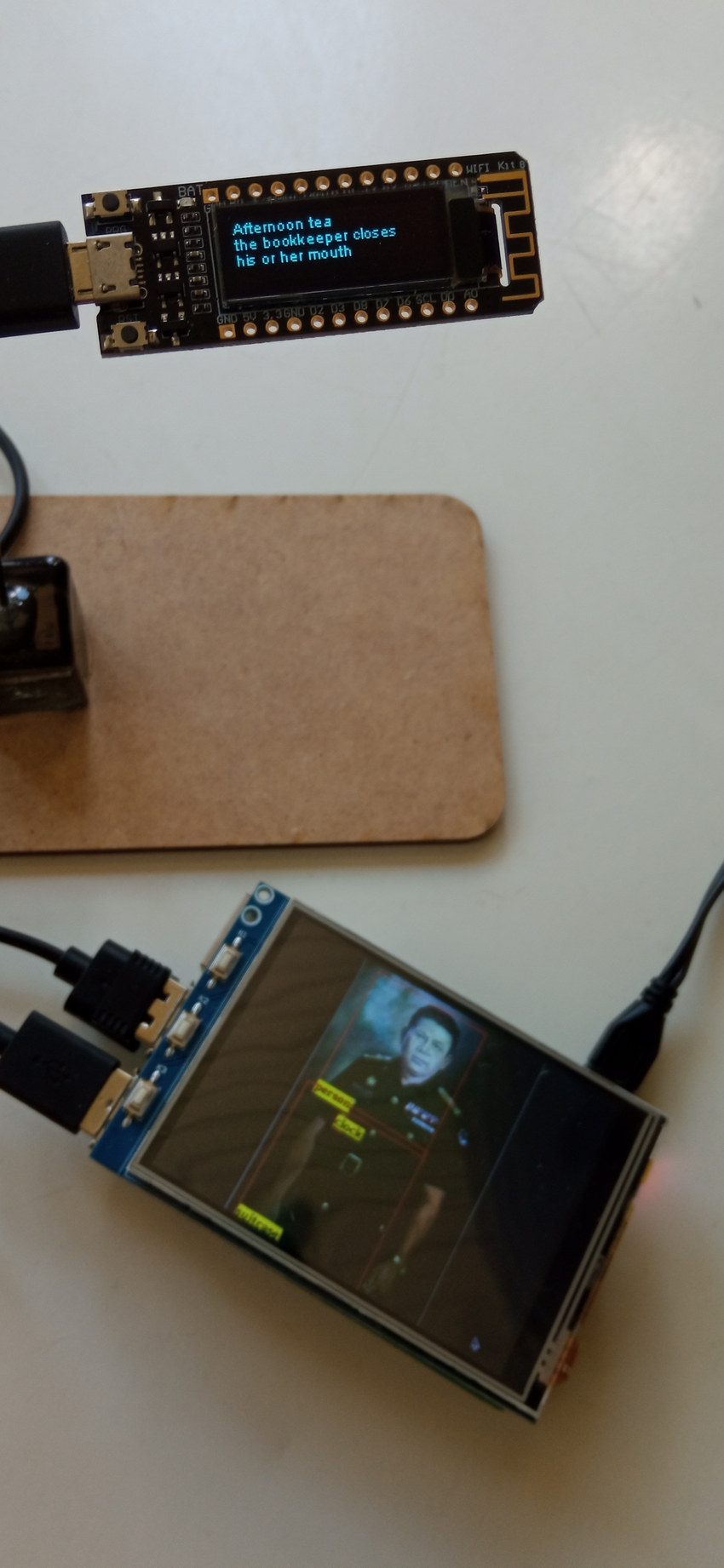Aiku
This work is designed around the prospect of serendipity, inspiration and imagination in an autonomous system. It is also a note on the flaws of current commercial AI systems, and how limited can some of them be. In fact, the mistakes the software makes are likely more interesting than the intended results, which are on the verge of uselessness. The name is a wordplay on haikus, AI and the Finnish prefix for adulthood.
The piece runs on a single board computer connected to the Internet. This device is equipped with a Google Coral TPU, an accessory that allows cheap computers to run inferences, that is, to use AI models that make classifications and other processing intensive tasks. It is useful for machine vision tasks, such as video surveillance. It is used here not with live images, but by retrieving random picture files from wikipedia. The reason for using an online source instead of a camera is that the local solution would offer not much input variation - there are only a few different objects that can be found at a gallery.
The software downloads a picture and makes an inference on it that is most likely to be flawed: the Google dataset used has the capacity to recognize only 90 different things. The pictures and results are displayed on a small screen. These mistaken inferences are then fed into another AI, which uses the words as a prompt to create haikus. The nonsensical poems are finally displayed in another micro display.


